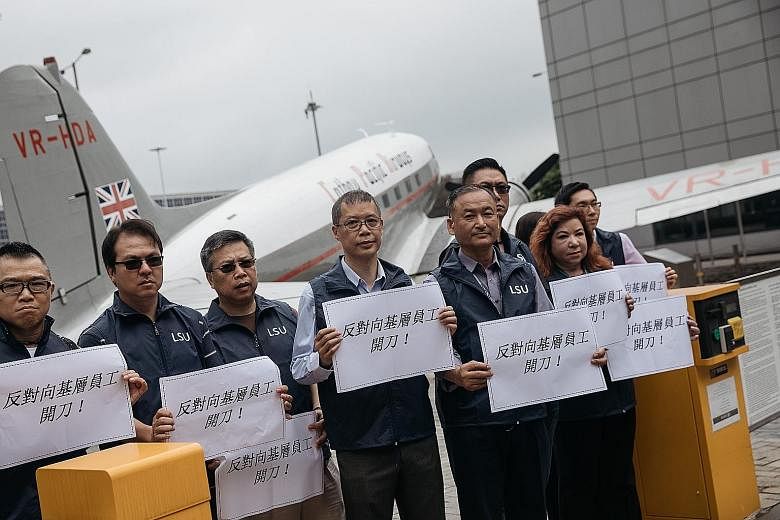From cutting jobs to squeezing extra seats into its planes, Hong Kong flagship carrier Cathay Pacific is trying out various ways to return to profitability in three years.
But analysts said the airline needs to do more to justify its premium air fare in the face of rising competition from low-cost carriers.
Hong Kong-based analyst Will Horton of the CAPA Centre for Aviation noted that there are limited areas in which to cut costs. "Fuel prices are standard while airport and overflight charges are generally standardised and often increasing," he told The Straits Times.
All full-service airlines have to find new ways to earn money, and Cathay could do so by selling its lounge access, exit row seats, extra luggage and a larger meal, he suggested.
Last week, Cathay Pacific announced that it would be cutting 600 jobs in its head office as part of a transformation programme. Pilots and cabin crew have been exempted from the retrenchment exercise.
Industry observers noted that it was the biggest retrenchment exercise since the Asian financial crisis in 1997. But they were not surprised by the job cuts after the airline reported a net loss of HK$575 million (S$102 million) last year.
The need to restructure and to reduce headcount was also flagged earlier in the year.
Responding to ST queries, a Cathay Pacific spokesman said: "We just want to reiterate that although the people changes will create some cost reductions, cost savings are not the primary aim for changing our management structure."
The airline's new management structure will help improve productivity and enable it to make decisions more quickly and be more responsive to customers, she said.
She declined to say what other measures will be rolled out to help the company save HK$4 billion over a three-year period.
However, earlier reports said the airline plans to squeeze in additional seats in economy class on its Boeing 777-300 planes, from the middle of next year.
This would mean 10 seats per row instead of nine currently and will allow Cathay Pacific to fly an extra 1.4 million passengers per year.
"It gives us a big productivity boost because we have more take-offs and landings with extra seats but the same number of aircraft, and the seat cost per mile will go down," new Cathay Pacific chief executive Rupert Hogg told South China Morning Post.
In a statement last week, Mr Hogg had said changes in travellers' habits and a challenging business environment have resulted in the need to change.
Captain Ross Aimer, chief executive of Aero Consulting Experts, said Cathay was under tremendous pressure from low-cost carriers, as well as Chinese airlines, which have been offering more direct flights between China and international destinations.
And the move to pay top dollar in advance for fuel, hedging on the price to go up, has led to millions of dollars in losses, Captain Aimer told ST. "This adds huge costs to their passenger seat miles. They cannot charge more for those seats because of competition," he said.


